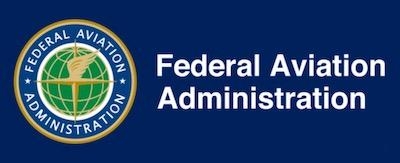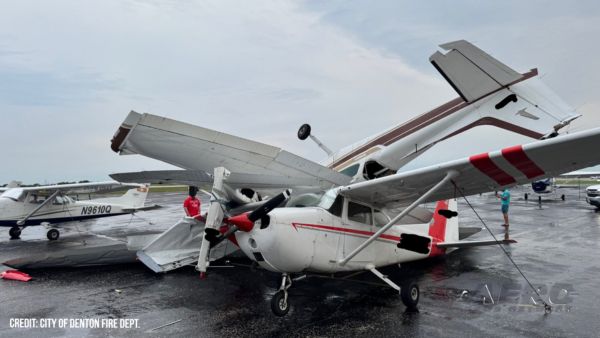Mon, Jan 14, 2019
Final Rule Becomes Effective January 22
The FAA has eliminated the requirement for operators to apply for an RVSM (Reduced Vertical Separation Minimum) authorization when their aircraft are equipped with qualified ADS-B Out systems and meet specific altitude-keeping equipment requirements for operations in RVSM airspace.

On Dec. 21, 2018, the FAA issued a final rule effective on Jan. 22, 2019, revising the FAA's requirements for application to operate in RVSM airspace. The amendment eliminates the requirement for operators to apply for an RVSM authorization when their aircraft are equipped with qualified ADS-B Out systems and meet specific altitude-keeping equipment requirements for operations in RVSM airspace. This action recognizes the enhancements in aircraft monitoring resulting from the use of ADS-B Out systems and responds to requests from operators to eliminate the burden and expense of the current RVSM application process for aircraft equipped with qualified ADS-B Out systems.
The final rule makes significant and beneficial changes to 14 CFR Part 91 Appendix G to Part 91-Operations in Reduced Vertical Separation Minimum (RVSM) Airspace. While the entire revision should be reviewed, there are two areas to highlight. Section 2. Aircraft Approval was amended to recognize the addition of a new Section 9. Aircraft Equipped with Automatic Dependent Surveillance-Broadcast Out. Section 2 paragraph (a) now reads:
"Except as specified in Section 9 of this appendix, an operator may be authorized to conduct RVSM operations if the administrator finds that its aircraft comply with this section."
The new Section 9 in its entirety reads as follows:
Section 9. Aircraft Equipped with Automatic Dependent Surveillance-Broadcast Out. An operator is authorized to conduct flight in airspace in which RVSM is applied provided:
(a) The aircraft is equipped with the following:
(1) Two operational independent altitude measurement systems.
(2) At least one automatic altitude control system that controls the aircraft altitude-
(i) Within a tolerance band of ±65 feet about an acquired altitude when the aircraft is operated in straight and level flight under nonturbulent, nongust conditions; or
(ii) Within a tolerance band of ±130 feet under nonturbulent, nongust conditions for aircraft for which application for type certification occurred on or before April 9, 1997, that are equipped with an automatic altitude control system with flight management/performance system inputs.
(3) An altitude alert system that signals an alert when the altitude displayed to the flightcrew deviates from the selected altitude by more than-
(i) ±300 feet for aircraft for which application for type certification was made on or before April 9, 1997; or
(ii) ±200 feet for aircraft for which application for type certification is made after April 9, 1997.
(4) A TCAS II that meets TSO C-119b (Version 7.0), or a later version, if equipped with TCAS II, unless otherwise authorized by the administrator.
(5) Unless authorized by ATC or the foreign country where the aircraft is operated, an ADS-B Out system that meets the equipment performance requirements of § 91.227 of this part. The aircraft must have its height-keeping performance monitored in a form and manner acceptable to the administrator.
(b) The altimetry system error (ASE) of the aircraft does not exceed 200 feet when operating in RVSM airspace.
The AEA is encouraged with the FAA's recognition of modern technology and the elimination of unnecessary administrative burden when the aircraft is properly equipped and maintained by professional technicians.
AEA member companies servicing aircraft that operate in RVSM airspace are encouraged to download and become familiar with the entire revision. In addition, shops are encouraged to share this significant rulemaking with their customers.
(Source: AEA news release)
More News
Runway Entrance Lights (REL) An array of red lights which include the first light at the hold line followed by a series of evenly spaced lights to the runway edge aligned with the >[...]
Also: Daher Climate Policy, Boeing Reveal, Another Laser Whacko, Spirit Proceeds Textron eAviation is putting the development of its Nexus eVTOL aircraft on hold, meaning its first>[...]
Also: SUN ‘n FUN’s EarlyBird, Rotax Advanced Start, Girls in Aviation Day, Lockwood RV-916! The recently concluded Midwest Aviation Expo, hosted by the Mt. Vernon Outla>[...]
Also: Commercial A/C Certification, GMR Adds More Bell 429s, Helo Denial, John “Lucky” Luckadoo Flies West CAF’s Col. Mark Novak has accumulated more than 1,000 f>[...]
Also: Carrier Landings Not Required, UAL To Tel Aviv, ATC in College, EMAS Systems Stop 2 Swift Fuels 100R unleaded fuel has earned ASTM production specification approval. This 100>[...]
 ANN's Daily Aero-Term (09.10.25): Runway Entrance Lights (REL)
ANN's Daily Aero-Term (09.10.25): Runway Entrance Lights (REL) Airborne 09.04.25: Textron Nixes EPlane, Space Command!, CO MidAir
Airborne 09.04.25: Textron Nixes EPlane, Space Command!, CO MidAir Airborne Affordable Flyers 09.11.25: MWAE25, Tests-Flt Design F2, Vashon Ranger
Airborne Affordable Flyers 09.11.25: MWAE25, Tests-Flt Design F2, Vashon Ranger Airborne 09.10.25: 1000 Hr B29 Pilot, Airplane Pile-Up, Haitian Restrictions
Airborne 09.10.25: 1000 Hr B29 Pilot, Airplane Pile-Up, Haitian Restrictions Airborne 09.08.25: Swift Fuel Approval, Diamond Lil Roars, SnF26 Tkts On Sale!
Airborne 09.08.25: Swift Fuel Approval, Diamond Lil Roars, SnF26 Tkts On Sale!



